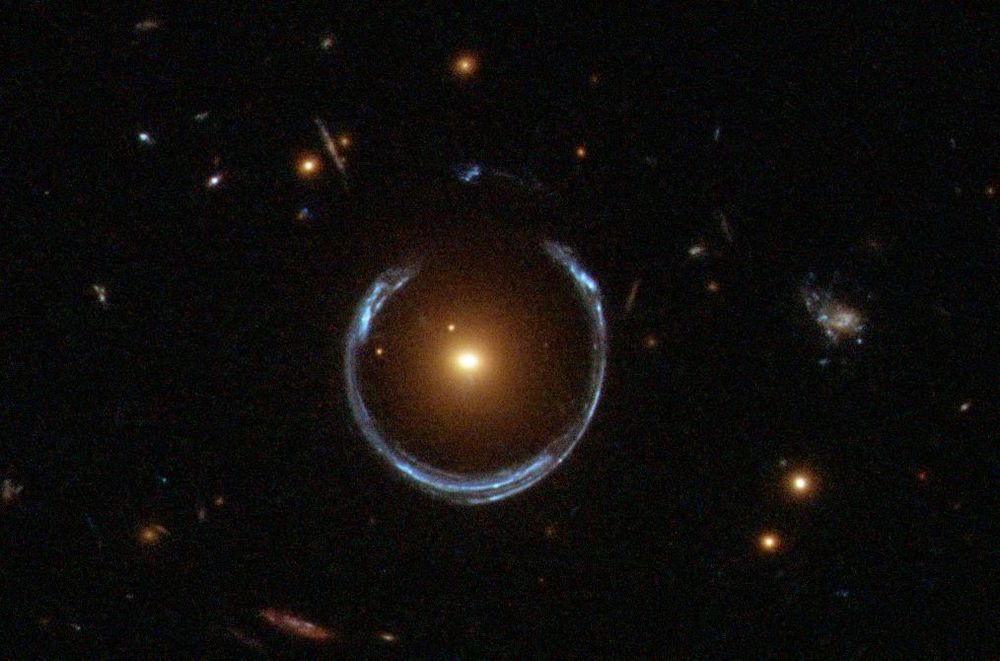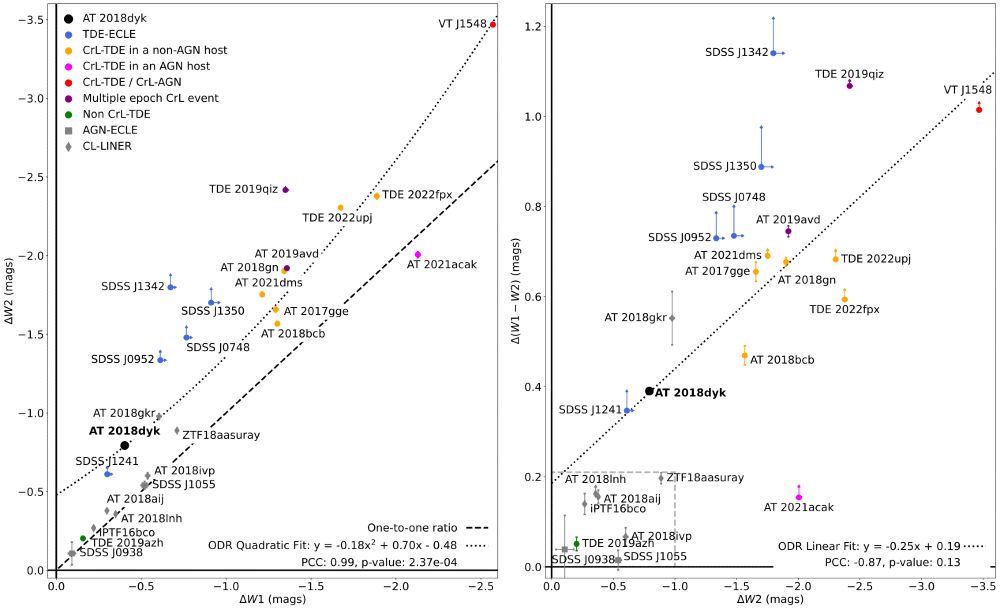
Read more at: ras.ac.uk/news-and-pre...

Read more at: ras.ac.uk/news-and-pre...
Very happy to answer any questions you might have on this or the paper itself ☺️
Very happy to answer any questions you might have on this or the paper itself ☺️
On a final note, the MIR observations were made by favourite telescope WISE, which was decommissioned and burned up in Earth's atmosphere last year after more than 14 years of data gathering. 🫡

On a final note, the MIR observations were made by favourite telescope WISE, which was decommissioned and burned up in Earth's atmosphere last year after more than 14 years of data gathering. 🫡
To conclude!
AT 2018dyk is fascinating TDE that occurred in a gas rich environment.
Telling TDEs apart from AGN flares is *not* an easy job
To conclude!
AT 2018dyk is fascinating TDE that occurred in a gas rich environment.
Telling TDEs apart from AGN flares is *not* an easy job
This is an indication that the different classes of object have environmental differences - perhaps differing amounts of gas/dust or configurations.
I'll be extending and refining this analysis with more objects going forward so stay tuned!
This is an indication that the different classes of object have environmental differences - perhaps differing amounts of gas/dust or configurations.
I'll be extending and refining this analysis with more objects going forward so stay tuned!
This is also confirmed (those limited by the small number statistics) by those TDEs with redder outbursts also having larger outbursts. Whereas the changing look AGN we explored
This is also confirmed (those limited by the small number statistics) by those TDEs with redder outbursts also having larger outbursts. Whereas the changing look AGN we explored
Changing look AGN outbursts follow a 1-to-1 relation in their peak changes in luminosity in the two WISE bands.
TDEs showing the high energy iron emission lines don't follow this relation. Instead, their
Changing look AGN outbursts follow a 1-to-1 relation in their peak changes in luminosity in the two WISE bands.
TDEs showing the high energy iron emission lines don't follow this relation. Instead, their
In short - yes it can! Though a lot more work and observations will be needed to tie down the specifics.
Enter this plot:

In short - yes it can! Though a lot more work and observations will be needed to tie down the specifics.
Enter this plot:
As TDEs and AGN related flares are still hard to tell apart - and alas not every galaxy has MaNGA data to help with this - I started to wonder if
As TDEs and AGN related flares are still hard to tell apart - and alas not every galaxy has MaNGA data to help with this - I started to wonder if
We also know that the region around the SMBH
We also know that the region around the SMBH
The delayed OIII emission
The delayed OIII emission
What about the increased OIII emission though? 👀
What about the increased OIII emission though? 👀
This allowed us to perform a much more in-depth analysis of how these emission lines are being produced - with this indicating that the emission lines prior to 18dyk being produced by evolved stars rather than AGN activity.
This allowed us to perform a much more in-depth analysis of how these emission lines are being produced - with this indicating that the emission lines prior to 18dyk being produced by evolved stars rather than AGN activity.
To investigate further we also explore archival MaNGA data of the galaxy, which in essence consists of many spectra each covering a small
To investigate further we also explore archival MaNGA data of the galaxy, which in essence consists of many spectra each covering a small
I say *close* to because the spectra don't match exactly - the more recent DESI spectrum has much stronger OIII emission than the SDSS spectrum
I say *close* to because the spectra don't match exactly - the more recent DESI spectrum has much stronger OIII emission than the SDSS spectrum
We first compared this new spectrum to an archival spectrum obtained by the SDSS years before 18dyk was seen to outburst. With the two looking remarkably similar.
We first compared this new spectrum to an archival spectrum obtained by the SDSS years before 18dyk was seen to outburst. With the two looking remarkably similar.

